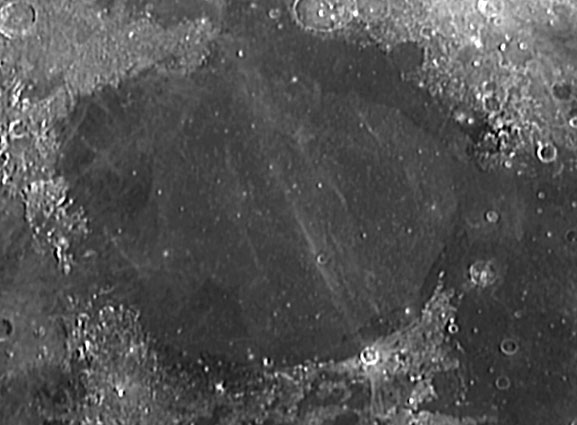Serenitatis in Black and White and Gray

Explanation:
As sunrise creeps across the lunar surface, all telescopes are glued to that magic zone of long shadows and subtle topography. Thus each spot on the Moon is only observed for the day of sunrise and a few days following, and then ignored until the next lunation (who really observes the sunset terminator?). But cast a glance at the bright lands far from the terminator and you will discover things you never knew. I do. On this near full Moon view of Mare Serenitatis a number of things pop out. First, Serenitatis isn't round - the northwest section is not only angular but bulges out. Some U.S. Geological Survey scientists have proposed that another basin is there. The second obvious feature is the dark ring along the edges of Serenitatis. The dark lavas are older and titanium-rich, and the younger, lighter-hued ones in the middle are poorer in titanium. Much darker material occurs at the Apollo 17 site and west of the Sulpicius Gallus crater. This black material is volcanic ash with dark beads of glass. The high sun also shows interesting features on crater interiors. Plinius has a cross of brightness centered on it's central peak, and Jansen and Ross have surprisingly dark floors. Dawes is surrounded by a partial ring of dark material. Finally, this is the best time to find Linne because its bright nimbus makes it the most conspicuous object in western Serenitatis.
